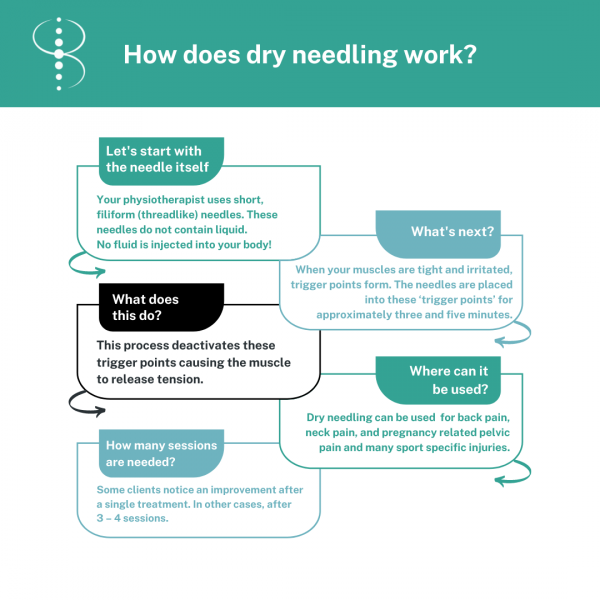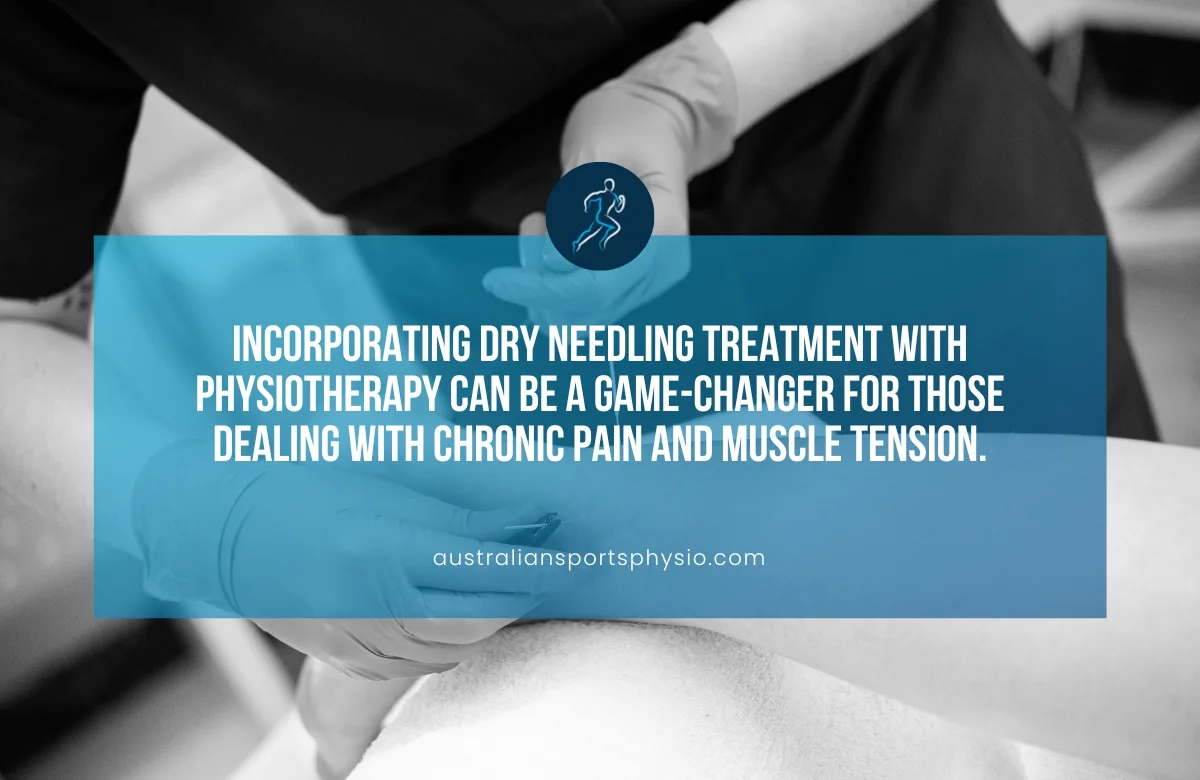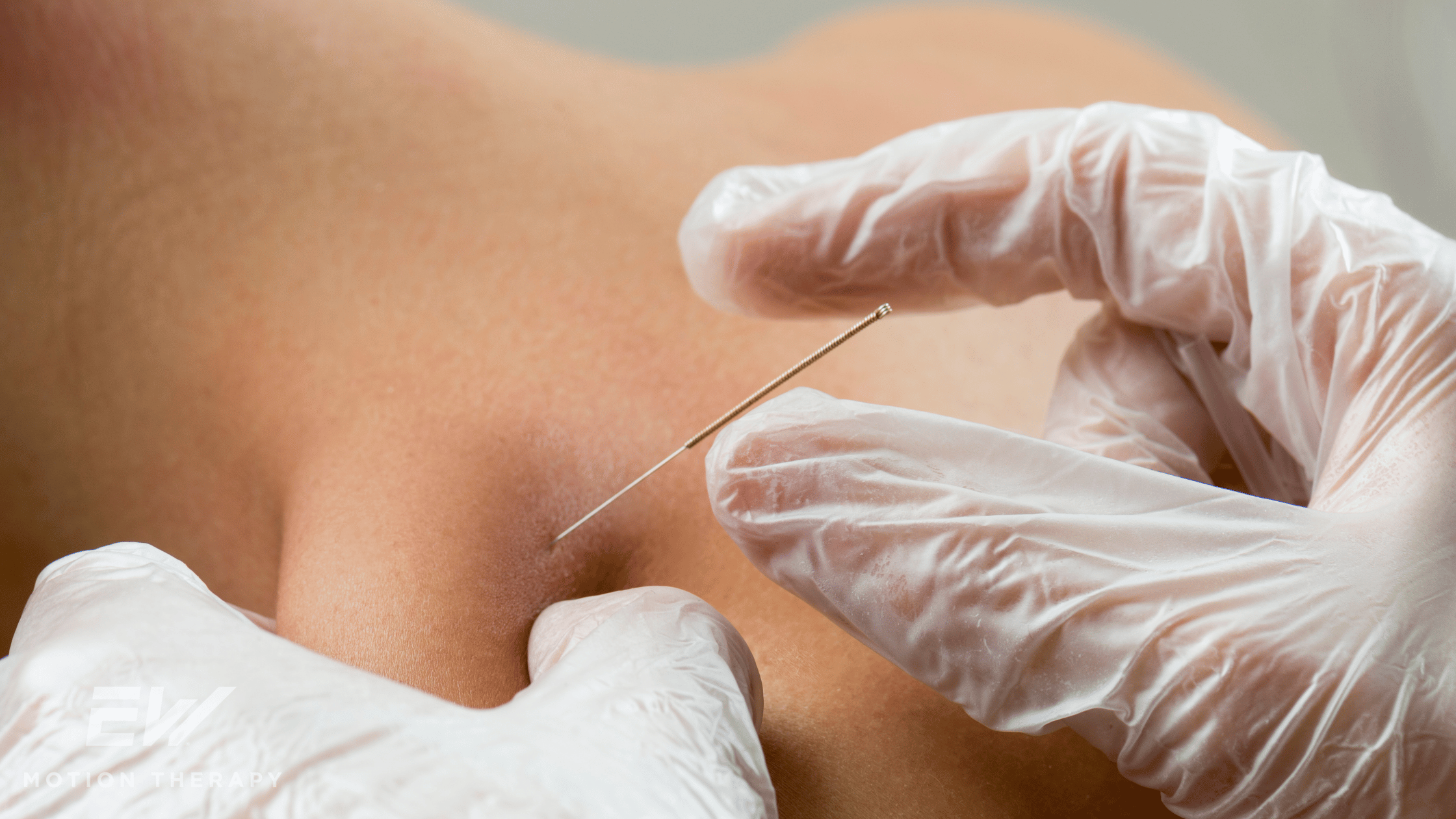Dry Needling vs. Acupuncture: What's the Point?
Understanding the differences between these two therapies can help you make informed decisions about your healthcare.
Understanding the differences between these two therapies can help you make informed decisions about your healthcare.

Dry needling and acupuncture. Both involve sticking thin needles into your skin.
Both are often touted for pain relief.
But are they really the same thing?
The short answer is no. While they share some similarities, dry needling and acupuncture are distinct practices with different philosophies, techniques, and goals.
This blog post will delve into the key differences between dry needling and acupuncture, exploring their origins, mechanisms, applications, and safety considerations.
We'll also address some of the top questions people have about these two therapies to help you make informed decisions about your healthcare.

The primary difference lies in their underlying philosophies and treatment approaches.

Rooted in Traditional Chinese Medicine (TCM), acupuncture is based on the concept of Qi, a vital energy that flows through the body along meridians.
Acupuncture aims to restore the balance of Qi by inserting needles into specific points along these meridians, stimulating the body's natural healing abilities and promoting overall well-being.

A modern Western approach, dry needling focuses on treating musculoskeletal pain and dysfunction.
It involves inserting thin needles into trigger points—tight bands of muscle that can cause pain and restricted movement—to release tension, reduce pain, and improve function.
While both therapies use similar needles, their application and intent differ significantly.
Acupuncture is a holistic practice that considers the whole person, while dry needling is a more targeted approach focused on musculoskeletal issues.

No, dry needling is not simply another name for acupuncture. Although they share the use of filiform needles, their theoretical foundations and treatment protocols are distinct.
Acupuncture is based on ancient Eastern medicine principles and aims to balance energy flow in the body.
Dry needling, on the other hand, is based on Western anatomical and neurophysiological principles and targets specific musculoskeletal problems.
Think of it this way: both bicycles and motorcycles have two wheels and a handlebar, but they serve different purposes and operate under different principles.
Similarly, dry needling and acupuncture share a tool but have different applications and therapeutic goals.
Insurance coverage for dry needling varies widely depending on your insurance provider, plan, and location.
Some insurance companies may cover dry needling when performed by a licensed healthcare professional, such as a physical therapist, chiropractor, or physician.
However, they may require a specific diagnosis or referral.
It's crucial to check with your insurance provider to determine your coverage for dry needling.
Be sure to ask about any pre-authorization requirements, limitations on the number of sessions, and whether your provider is in-network.
Dry needling is generally safe when performed by a qualified practitioner. However, like any medical procedure, it carries some potential side effects.
The most common side effects are typically mild and temporary, including:
Serious side effects are rare but can include:
Choosing a qualified and experienced practitioner can significantly minimize the risk of complications.

Dry needling is believed to work through several mechanisms:
While the exact mechanisms are still being researched, dry needling has been shown to be effective in managing various musculoskeletal pain conditions.

Dry needling can be used to treat a wide range of musculoskeletal conditions, including:
It's important to consult with a healthcare professional to determine if dry needling is an appropriate treatment option for your specific condition.

While both dry needling and cortisone injections aim to reduce pain and inflammation, they work in different ways:
Dry needling may be a preferred option for those seeking a non-pharmacological approach with fewer potential side effects.
However, cortisone injections may be more suitable for severe inflammation or when other treatments have failed.
The sensation of dry needling can vary from person to person.
Some people may feel a slight prick or sting as the needle is inserted, while others may feel nothing at all.
Once the needle is in place, you may experience a deep aching sensation, a muscle twitch, or a feeling of pressure.
These sensations are usually mild and subside quickly.
Practitioners skilled in dry needling use techniques to minimize discomfort and ensure patient comfort throughout the procedure.

The response to dry needling varies depending on the individual, the condition being treated, and the severity of symptoms.
Some people may experience immediate pain relief, while others may require several sessions to notice significant improvement.
Typically, a series of dry needling treatments spaced over a few weeks is recommended for optimal results.
Your practitioner will assess your progress and adjust the treatment plan accordingly.
While generally safe, dry needling may not be suitable for everyone. Contraindications to dry needling include:
It's essential to discuss your medical history and any concerns you may have with your practitioner before undergoing dry needling.

The frequency of dry needling treatments depends on your individual needs and response to treatment.
Initially, your practitioner may recommend sessions once or twice a week. As your symptoms improve, the frequency can be reduced.
Maintenance sessions may be recommended periodically to prevent recurrence of symptoms.
Your practitioner will work with you to develop a treatment plan that meets your specific goals.

Both dry needling and trigger point injections target trigger points to relieve pain, but they differ in their approach:
Uses a solid filament needle to mechanically stimulate the trigger point, causing it to release and reduce pain.
Involves injecting a substance, such as a local anesthetic or corticosteroid, into the trigger point to reduce inflammation and pain.
Dry needling is a non-pharmacological approach with fewer potential side effects, while trigger point injections provide a more potent and immediate effect but may have limitations on the frequency of injections.
Intramuscular Stimulation (IMS) is a form of dry needling that specifically targets shortened or contracted muscles.
It uses acupuncture needles to stimulate deep within the muscle, causing a therapeutic response.
While IMS utilizes dry needling techniques, it differs in its focus on neuromuscular dysfunction and its specific approach to needle insertion and stimulation.
Both IMS and dry needling can be effective in treating musculoskeletal pain, but IMS may be particularly beneficial for conditions involving muscle shortening or nerve entrapment.

Dry needling and acupuncture, while sharing the use of thin needles, are distinct therapies with different origins, principles, and applications.
Dry needling is a modern Western approach focused on treating musculoskeletal pain by targeting trigger points.
Acupuncture, rooted in Traditional Chinese Medicine, aims to restore the balance of energy flow in the body for overall well-being.
If you're considering dry needling or acupuncture, consult with a qualified healthcare professional to determine which approach is right for you and to ensure safe and effective treatment.
Your cart is currently empty.
Start Shopping